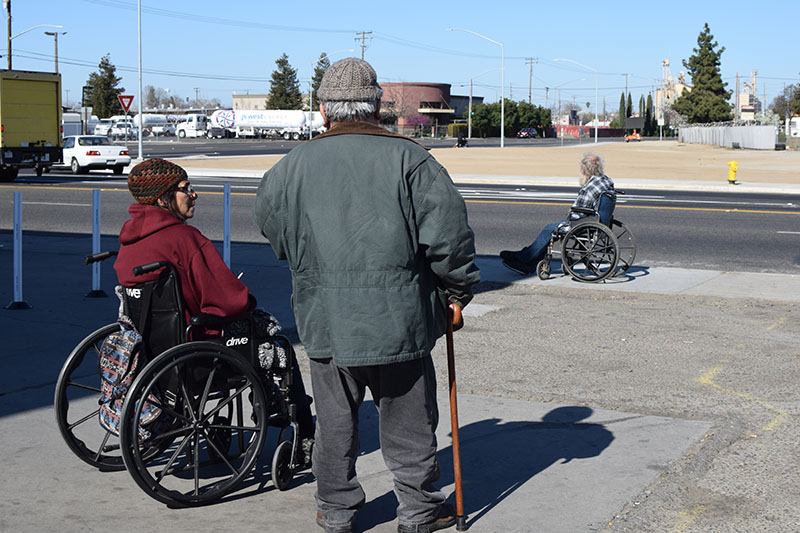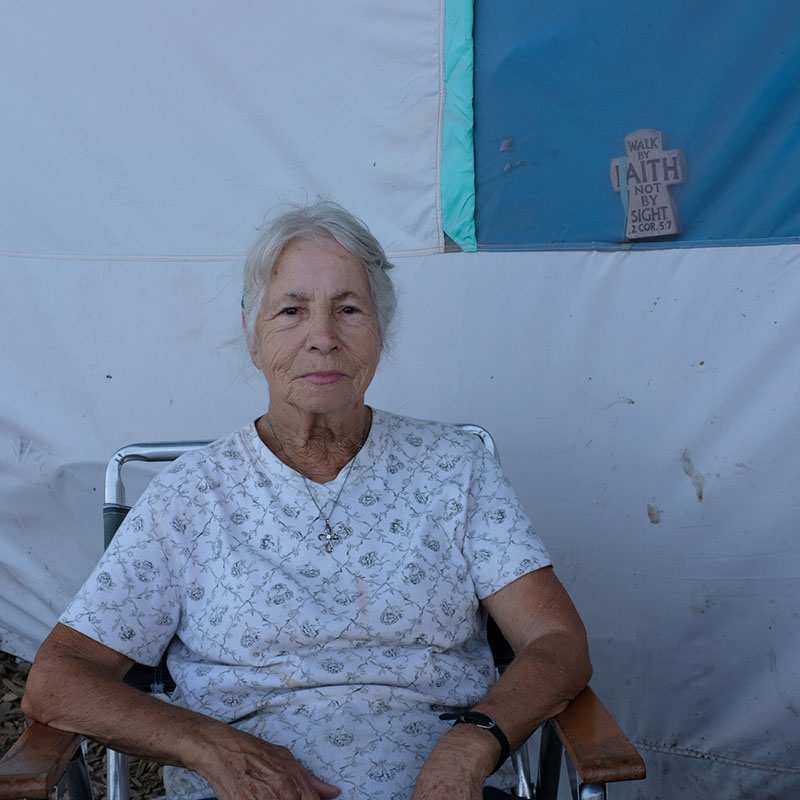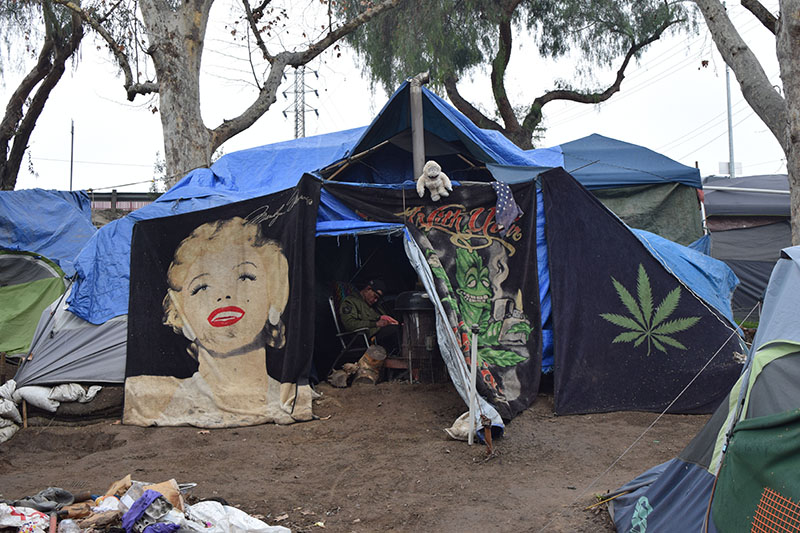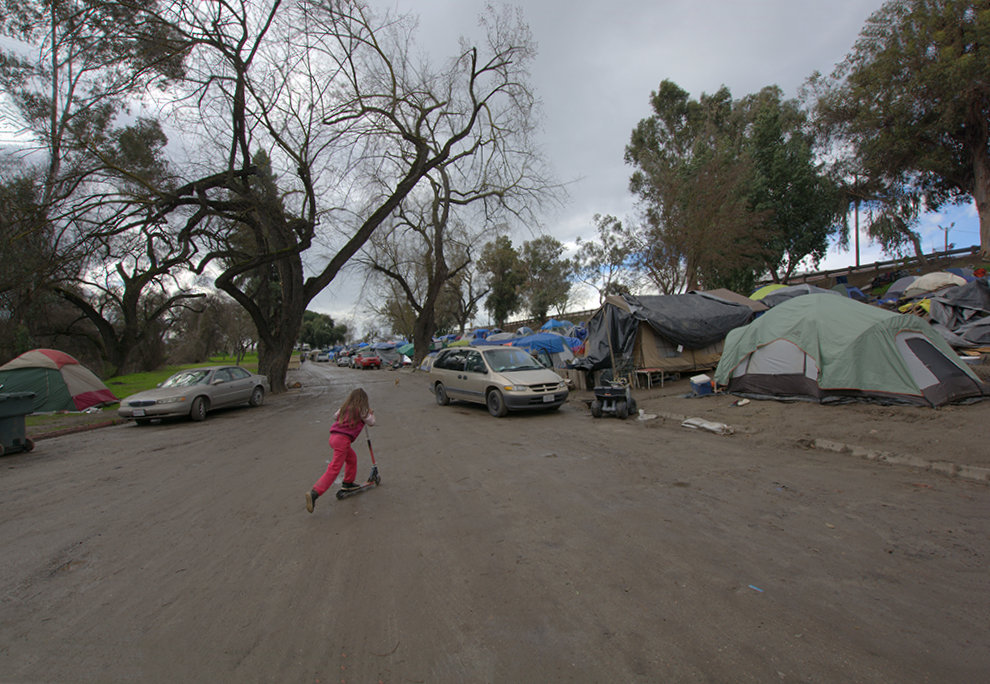Few people would argue that releasing mentally ill people from institutions of care into the streets would have good consequences. That policy—closing mental institutions—is usually attributed to Ronald Reagan when he was governor of California, but it began in the 1960s, well before the Reagan administration. Today, the consequences are all around us; the best estimates show 25% of homeless people are seriously mentally ill, and up to 45% have some lesser degree of mental illness.
After only a little reflection, most people would also agree that drug use among mentally ill people who are homeless isn’t necessarily the cause of their homelessness. By definition, mentally ill people have diminished capacities prior to and absent from drug use. That’s why our courts of law determine some people are incompetent to stand trial; they’re deemed incapable of defending themselves. So in the case of mentally ill homeless people, we can say drug use may be associated with homelessness, but it is not the primary cause of homelessness, especially in those cases where people are too disturbed to work.
We might also find wide agreement that people on disability with fixed incomes could become homeless in the event of steeply rising costs, especially housing costs. In states like California, housing costs in booming economies like the Bay Area have pushed even people with good incomes into so-called “bedroom communities,” where they have long commutes to and from work.

In Modesto, notorious as a Bay Area bedroom community, average rents are over $1,000 a month. In the same region, homeless people on disability generally receive around $1000 a month in total disability payments. Some homeless people pay as much as $600 a month for a shared room; others pay that or more for an unheated garage. Others are on the streets. Again, if a disabled homeless person also happens to use drugs, we couldn’t claim homelessness in that case was caused by drugs; the prime factors were a fixed income and rising housing costs.
Rising rents are just one consequence of a volatile and transformational economy; another is a huge disparity in incomes and wealth. This disparity drives factors like housing costs once regional differences are considered.
For example, median annual incomes in Alameda County are almost $90,000. In Santa Clara County, median annual incomes are well over $100,000. But even with almost forty percent of Stanislaus County wage earners commuting to the Bay Area, the county’s median annual wage is still just over $50,000. That means that people who live and work in Stanislaus County on average have far less wealth and income than people who live in Stanislaus County and work elsewhere.
Many will argue that homelessness is due to a decline in the work ethic. They claim homeless people are lazy. But according to a study by the Stanislaus Community Foundation, of the top 100 jobs in Stanislaus County, only 25 pay a living wage, with a living wage defined as $11.97 an hour for one adult with no children, or $32.58 an hour for one adult with two children. It’s not that people aren’t working, it’s that working doesn’t pay enough.
There are well-documented studies that show economic stress, especially poverty, contributes to a rise in drug use. Homelessness is the most severe form of economic stress, at least in industrialized nations. It is thus not surprising that many homeless people use drugs.
The United Way’s Real Cost Measure estimates the income needed to meet basic needs. In 2017, 40% of the residents of Stanislaus County had incomes below an amount needed to meet their basic needs. The total number of households was 53,663. Among this total, many households are one major expense away from losing their housing. Given the likelihood of a large medical expense, loss of transportation or insurance, or some other calamity, it’s easy to imagine a percentage of these people becoming homeless in the near future.
California is often cited as having the largest homeless population in the United States, over 150,000 individuals. But that number is widely misinterpreted to mean California has the most widespread poverty. Actually, California isn’t even in the top 15 poorest states in the nation. The major factor driving homelessness in California, as in states like New York, Oregon and Washington, is housing costs.
And California is also not the leader in the rate of homelessness (homelessness per capita). The leader in the rate of homelessness is Washington DC, followed by New York and Hawaii. California is tied for fourth with Oregon.

Again, the forces driving homelessness do not seem to be related to drug use or even employment. The major factor seems to be rising costs of living, especially housing costs, with especially dire consequences for people with fixed incomes.
Recent economic reports stress robust stock markets and low unemployment rates, but those figures can be deceiving. In February of 2019, Mississippi’s unemployment rate of 4.8% was near a historic low. Nonetheless, by most metrics, Mississippi was consistently rated the poorest state in the nation. Again, it’s not that people aren’t working, it’s that more and more often, work doesn’t pay.
Along with drugs and a decline in the work ethic, politics and party policies are often cited as causal factors in homelessness. Liberals blame conservatives, and conservatives blame liberals. But a closer look at politics, poverty, and homelessness shows that neither political party has even begun to address poverty, and homelessness is merely extreme poverty made visible.
Again, the poorest states, including Mississippi, Arkansas, Louisiana, Alabama, Tennessee, and Kentucky are predominately Republican/conservative. Yet the states with highest rates of homelessness, New York, California, Hawaii and others, are predominately Democrat/liberal. Washington DC, though not a state, has the highest rate of homelessness of all, and it’s the epicenter of politics in the United States, providing yet more evidence that neither party has been able to address homelessness and poverty with any degree of success anywhere.
It’s often said that homelessness is the result of poor choices, but people don’t choose to be disabled or mentally ill. They also don’t choose their parents, but in many cases, the economic status of their parents does “choose” their success in life.
Many studies have shown that wealth is a better predictor for economic success than ability, including intelligence and hard work. While there are always exceptions, the likelihood children born to poor parents will remain poor is greater in America than in many other countries, especially European and Scandinavian countries.
When authorities in Stanislaus County permitted homeless people to camp in Modesto’s Beard Brook Park, two of the earliest entrants were young men in their thirties. In a poignant reminder of the generational effects of homelessness and poverty, the two brothers asked to pitch their tent, “in the same place our mother had hers.” Having spent most of their childhoods homeless or very poor, they endured the same conditions as adults.

Escaping poverty is difficult for multiple reasons, but no one should underestimate the negative effects of extreme poverty on the brain. Robert Sapolsky, the MacArthur “Genius” Award winner and Professor of Neurology and Neurological Sciences at Stanford, claims solid research shows a strong correlationship between low socioeconomic status and reduced brain function:
“By age five, the lower a child’s socioeconomic status, on the average…the poorer the frontal function concerning working memory, emotion regulation, impulse control, and executive decision making…foolishly pick a poor family to be born into, and by kindergarten, the odds of your succeeding at life’s marshmallow tests are already stacked against you.” (Behave 195-96)
Sapolsky’s work is especially important in establishing averages—metrics from which we can develop expectations and predict outcomes. But many people think about homelessness only in terms of exceptions. We thus hear stories about people who overcame tremendous odds against success and are then held up as models rather than outliers.
Such stories are especially misleading when they’re mistaken for norms. Yes, once in while a single mother with two kids rises from poverty to executive success, but, far more often, mother and kids suffer punishing hardship. In theory, averages and average people are the prime components of a strong middle class. In fact, the American middle class has been losing political and purchasing power for decades.
Again, numbers can be misleading. For example, the median household income across the United States in 2018 was $63,179; the average wage was $48,251. These numbers sound fairly impressive, especially for those regions where rents have remained relatively stable over the years.
But once these data are disaggregated, a more sobering picture emerges. In 2018, membership in the top half, or middle class, included people who earned between $25,000 and $249,999 a year. That’s a wide range, and especially revealing when measured against the 46.5% of the population who earn less than $30,000 per year.
In states like New York, California, Washington and Oregon, with a tiny few regional exceptions, $30,000 a year means extreme poverty. The poverty guideline for a family of four in Alaska is $25,100 per year; in Hawaii, it’s $28,870. Again, employment doesn’t necessarily mean economic security or freedom from the hardships of poverty.

Popular explanations for the causes of homelessness and poverty don’t bear up against thoughtful analysis, but they persist in the public mind because they offer easy answers to complex problems. One of the most persistent explanations for homelessness is, “It’s the drugs and alcohol,” but this explanation falls apart with thoughtful reflection.
Anyone who lived in or visited large cities in the past will remember the “wino,” the alcoholic who frequented the streets of run-down neighborhoods during the day. Despite his dependence on alcohol (winos were invariably male), the wino wasn’t homeless. He wasn’t homeless because every big city had hotels with cheap rooms. Most places also had rooming houses with inexpensive rooms. Known as “flophouses,” the cheap hotels and rooming houses provided housing for alcoholics and drug users. Those cheap sources of housing are gone from many big cities, especially cities that have thrived in the new economy.
Outside the bigger cities, cheap motels often offered long-term rates. They too became sources of housing for people with very low incomes. Today, cheap motels, even in inland regions like the San Joaquin Valley, can cost $60 a night; weekly or “bargain” rates approach $400. The simple fact is that wages, disability, and social security incomes haven’t kept up with housing costs.
Thinking about things like homelessness and poverty can be difficult, and that’s why many prefer simple explanations. While most everyone will admit that we’ve had huge increases in wealth inequality over the last forty years, few acknowledge such differences result over the long term in greater stress on the poorest members of society.
Nonetheless, most anyone would admit upon reflection that homelessness and extreme poverty are highly stressful. Financial anxiety from week-to-week and month-to-month is stressful enough, but just imagine walking into a homeless camp at night, alone and unarmed; few people could manage such a thing without severe stress, but severe stress is the rule for the homeless and extremely poor among us.
Again, Robert Sapolsky offers a wealth of information about the effects on human health under severe stress:
“When social capital decreases (thanks to inequality), up goes psychological stress. A mammoth amount of literature explores how such stress—lack of control, predictability, outlets for frustration, and social support—chronically activates the stress response, which as we saw in chapter 4, corrodes health in numerous ways.” (Behave 394)
With our hospitals and emergency rooms full of homeless people, most of us don’t need to be reminded of the burden extreme poverty has placed on our health care system. We may need to be reminded, however, that causes for the extreme poverty and homelessness that create that burden are more complicated than we’ve been led to believe by popular but unreasonable explanations.
And just as we could have predicted the results when we released mentally ill people into our streets, we should be able to predict the consequences if our only strategy for homelessness and poverty is to continue chasing people around town when they have nowhere else to go. Unless we change our thinking about homelessness and our strategies for addressing it, we can expect even more homelessness and extreme poverty in the very near future. It’s a virtual certainty.

Great article Eric, pretty much covers it, at least in how I think about it too.
Also, very timely as we rethink how to deal with Homelessness locally given the changes at the State level and potential impact of a decreased Federal budget allocation for Homelessness.
For those that may want more info. a new report was just released by the Manhattan Institute which can be found at: https://www.manhattan-institute.org/reevaluating-prosperity-of-american-family
Excellent article, should be a must read for all ages.
Thank you for your excellent article on homelessness. We cannot solve the problem if we don’t understand why people end up homeless. Those of us who have a roof over our heads are blessed and privileged.
Good article and researched in detail, but no emphasis made that Calif creates its own, and bigger homeless problem because its welcoming attitude is a magnet to America’s poor. It always has been (e.g. gold seekers and dust-bowl refugees). Calif tax payers cannot take care of their own, let alone the rest of America’s homeless populations. Animosity of conservatives against liberals occurs because liberal politicians know all this, but continue their agenda in spite of the fact it is destroying Calif…they do anything to stay in office. They are to America what Hitler was to Germany…eventually he destroyed the country because of his agenda.
Reagan was governor of California from 1967 to 1975. His administration accelerated the de-institutionalizing of mentally ill via the Lanterman-Petris-Shore Act in 1967 and budget cuts.
Thank you.